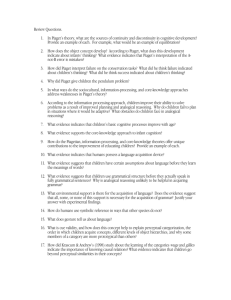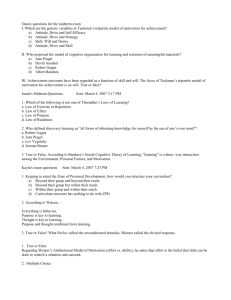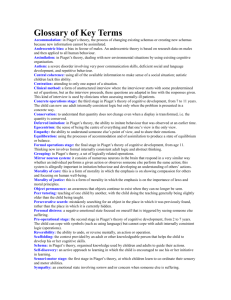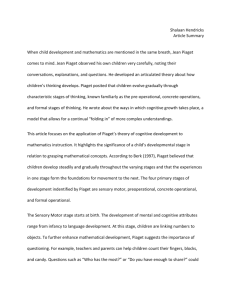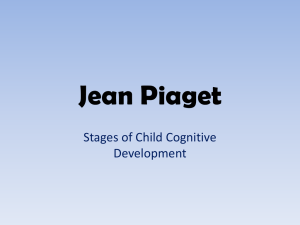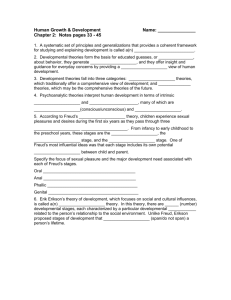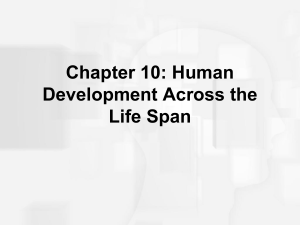Gauche and Dexterous Scribbles. Drawing, Geometry and the
advertisement
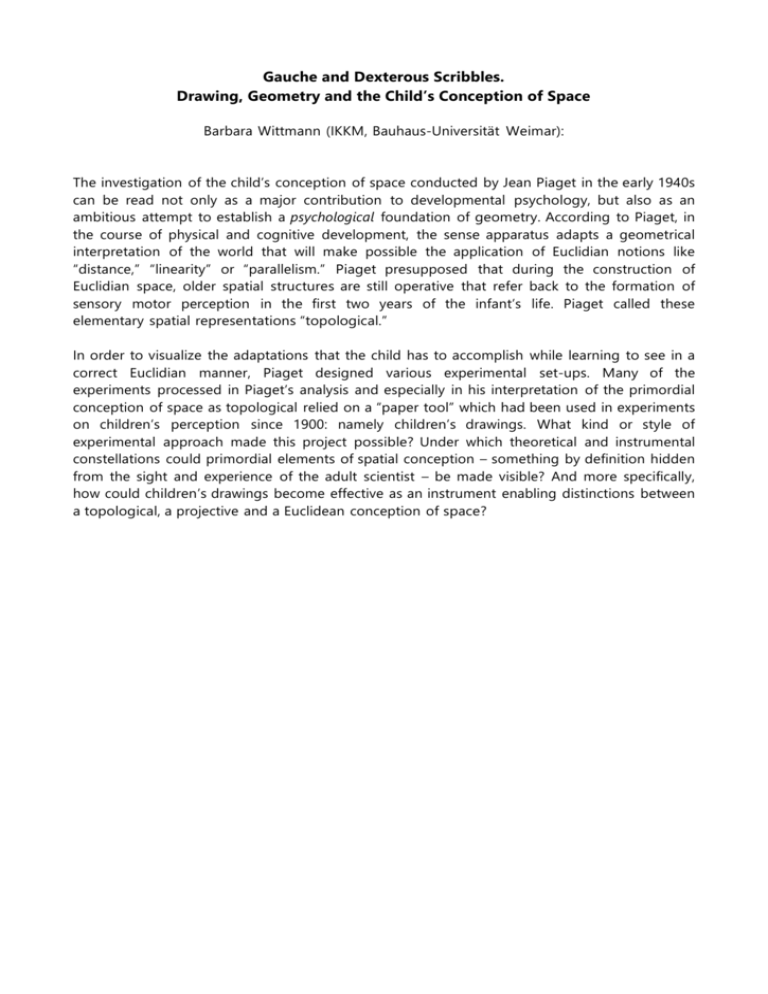
Gauche and Dexterous Scribbles. Drawing, Geometry and the Child’s Conception of Space Barbara Wittmann (IKKM, Bauhaus-Universität Weimar): The investigation of the child’s conception of space conducted by Jean Piaget in the early 1940s can be read not only as a major contribution to developmental psychology, but also as an ambitious attempt to establish a psychological foundation of geometry. According to Piaget, in the course of physical and cognitive development, the sense apparatus adapts a geometrical interpretation of the world that will make possible the application of Euclidian notions like “distance,” “linearity” or “parallelism.” Piaget presupposed that during the construction of Euclidian space, older spatial structures are still operative that refer back to the formation of sensory motor perception in the first two years of the infant’s life. Piaget called these elementary spatial representations “topological.” In order to visualize the adaptations that the child has to accomplish while learning to see in a correct Euclidian manner, Piaget designed various experimental set-ups. Many of the experiments processed in Piaget’s analysis and especially in his interpretation of the primordial conception of space as topological relied on a “paper tool” which had been used in experiments on children’s perception since 1900: namely children’s drawings. What kind or style of experimental approach made this project possible? Under which theoretical and instrumental constellations could primordial elements of spatial conception – something by definition hidden from the sight and experience of the adult scientist – be made visible? And more specifically, how could children’s drawings become effective as an instrument enabling distinctions between a topological, a projective and a Euclidean conception of space?

